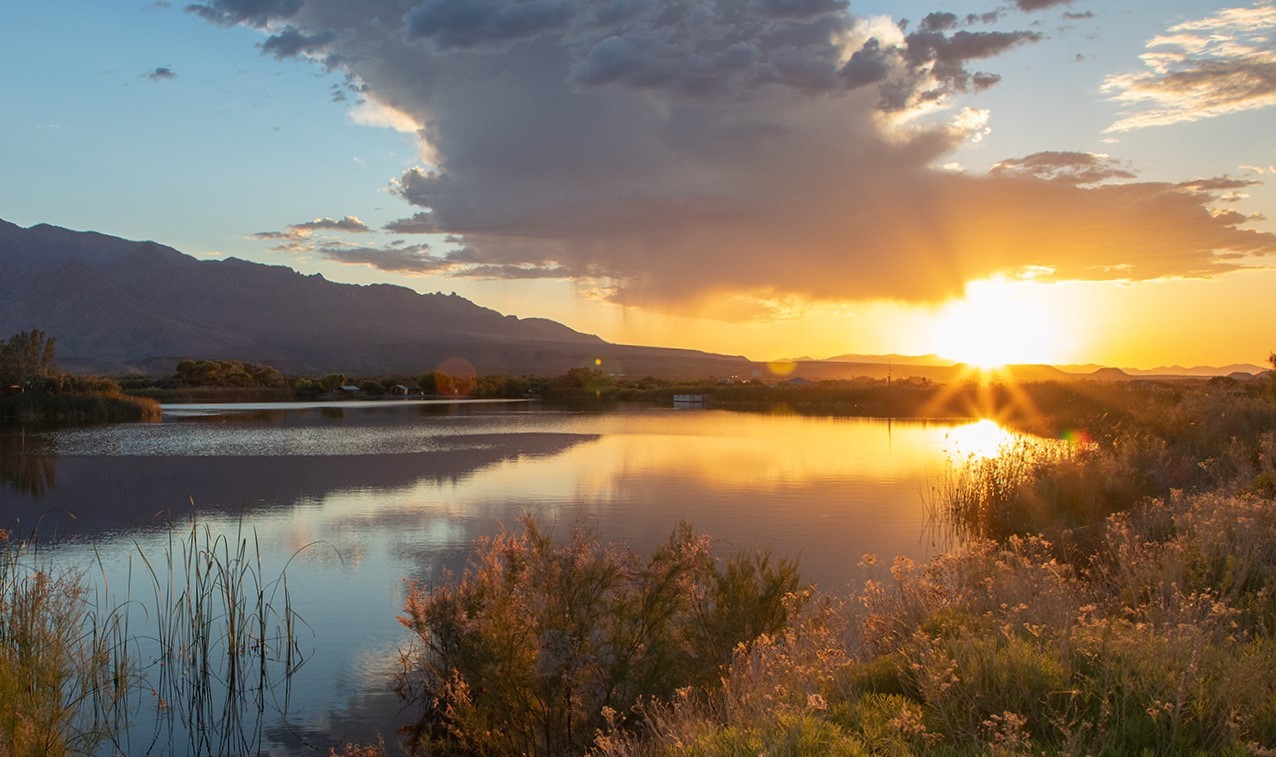
Protecting the Places We Love
How the Land and Water Conservation Fund Supports Outdoor Recreation in Nevada

Downloads
Nevada is a place of spectacular natural landscapes: from stark, ethereal deserts to rugged mountain peaks, forests, rivers, lakes, valleys and canyons. Every year, millions of Nevadans and visitors from around the world enjoy the outdoor recreation opportunities these lands provide.
The Land and Water Conservation Fund (LWCF) – a federal program that uses revenues from offshore drilling royalties to fund conservation projects to protect natural lands and ensure public access to outdoor recreation – has helped to protect many of the lands Nevadans treasure and provide access to trails, nature centers, visitor centers and other facilities that enhance our experience of the outdoors.
Nevada parks and natural lands that have benefited from LWCF funding receive at least 15 million visitors annually, and local and regional parks and recreation areas receive millions more. To further protect natural lands in Nevada and around the country, the federal government should guarantee full and permanent funding for the Land and Water Conservation Fund.
Funds provided by the LWCF have expanded Nevadans’ access to outdoor recreation and protected critical natural lands.
Since its founding in 1965, the LWCF has provided more than $100 million in funding to parks projects and land preservation in Nevada. This funding – which includes money for land acquisition as well as park development, renovation and maintenance – has included:
- $45 million in State and Local Assistance (“State Side”) grants for Nevada’s state parks, national parks, and local and regional parks and recreation areas;
- $60 million in “Federal Side” grants to help protect national parks, national forests, wildlife refuges, recreation areas and conservation areas;
- $3.9 million for habitat conservation;
- $438,000 through the LWCF’s Forest Legacy Program to help protect forested areas through land purchases and conservation easements.
LWCF funding has helped to protect and enhance lands that are enjoyed by Nevadans in every county in the state.
National parks and conservation areas: approximately 11 million visitors per year in Nevada. The LWCF has provided funds for land purchases as well as development grants to improve and maintain facilities. For example:
- Red Rock Canyon National Conservation Area has received more than $3 million in LWCF funding, including funds for land acquisitions to ensure the protection of this exceptional landscape and continued public access to the outdoor recreation opportunities it provides.
- A $33,000 grant to Great Basin National Park enabled the development of an interpretive trail in the park.
National forests: 4 million visitors per year in Nevada. The LWCF has provided millions of dollars to help protect Nevada’s forested areas.
- Nevada’s Humboldt-Toiyabe National Forest has received more than $26 million to fund land purchases and ensure continued public access to outdoor recreation opportunities in the forest.
- In 2009 the LWCF contributed $438,000 for the conservation of Ash Canyon Gateway, allowing increased public access to Nevada Lake Tahoe State Park and the Hobart and Marlette Reservoirs and protecting an area popular with hikers and mountain bikers.
State parks: 500,570 visitors per year (based on vehicle count only). Nevada’s State Parks have received approximately $24 million in LWCF funding, including funds for land purchases and the construction, renovation and development of facilities.
- Washoe Lake State Park has benefited from almost $2.8 million from the LWCF, including funds for the initial purchase of land and the development of boating facilities, campgrounds and other amenities used by the thousands of visitors who enjoy the park every year.
- The LWCF recently awarded $320,000 for the development of an Interpretive Center at Ice Age Fossils State Park to enhance visitors’ experience of this unique archaeological site.
Local parks: millions of visitors per year. LWCF funding for local recreational projects, from parks to public swimming pools, sports fields and playgrounds, has enabled the creation, development and maintenance of outdoor recreation sites across Nevada, including:
- $500,000 to finance the initial land acquisition for Sunset Regional Park, now Clark County’s most popular regional park, with playgrounds, walking trails, picnic areas, baseball fields and other recreational facilities.
- More than $650,000 awarded to Washoe County’s Galena Creek Park has paid for a number of improvements, including construction of two outdoor amphitheaters, as well as improved access to the park.
The federal government has repeatedly failed to fully fund the LWCF, resulting in missed opportunities to further protect and enhance outdoor recreation in Nevada.
The LWCF is entitled to accrue $900 million per year. However, these revenues cannot be spent unless appropriated by Congress, which means that the actual level of funding available from the LWCF is determined through the annual appropriations process. Only twice in the LWCF’s history has Congress chosen to appropriate the full $900 million for conservation purposes, instead diverting funding from the program to fill budget holes elsewhere and fund other, non-conservation projects.
Less than half of the $40.9 billion in total revenues that have accrued in the LWCF over the course of its lifetime have been appropriated and used for the purposes for which the fund was intended, leaving critical lands unprotected and contributing to a growing park maintenance and conservation funding shortfall at the federal and state levels.
Congress’ repeated failure to properly fund the LWCF has left state governments in Nevada and across the country needing a total of $27 billion for parks and recreation projects that would qualify for LWCF grants, as well as a backlog of unmet federal conservation needs estimated at more than $30 billion. In 2018, Nevada’s national park units alone needed $160.9 million to address deferred maintenance, and its state parks millions more.
In 2019, Congress passed and President Trump signed legislation permanently reauthorizing the Land and Water Conservation Fund. To further protect pristine lands and enhance outdoor recreation, Congress should build on this progress by guaranteeing the permanent funding of the LWCF at its authorized level of $900 million each year.
Topics
Authors
James Horrox
Policy Analyst, Frontier Group
James Horrox is a policy analyst at Frontier Group, based in Los Angeles. He holds a BA and PhD in politics and has taught at Manchester University, the University of Salford and the Open University in his native UK. He has worked as a freelance academic editor for more than a decade, and before joining Frontier Group in 2019 he spent two years as a prospect researcher in the Public Interest Network's LA office. His writing has been published in various media outlets, books, journals and reference works.
Levi Kamolnick
Environment Nevada
Find Out More

New Life for the Ocean

Healthy Parks, Healthy People

New Factsheet: Banning Single-Use Plastics

